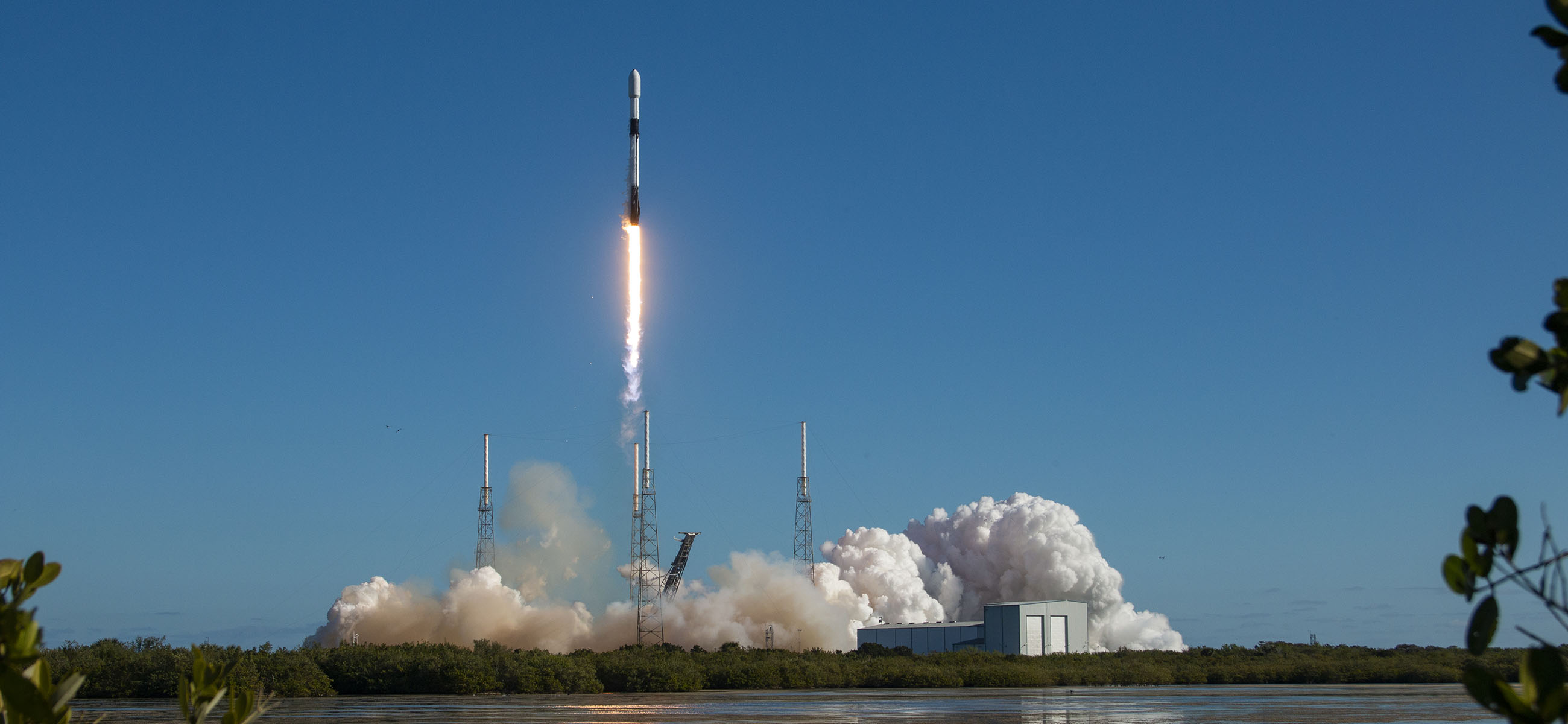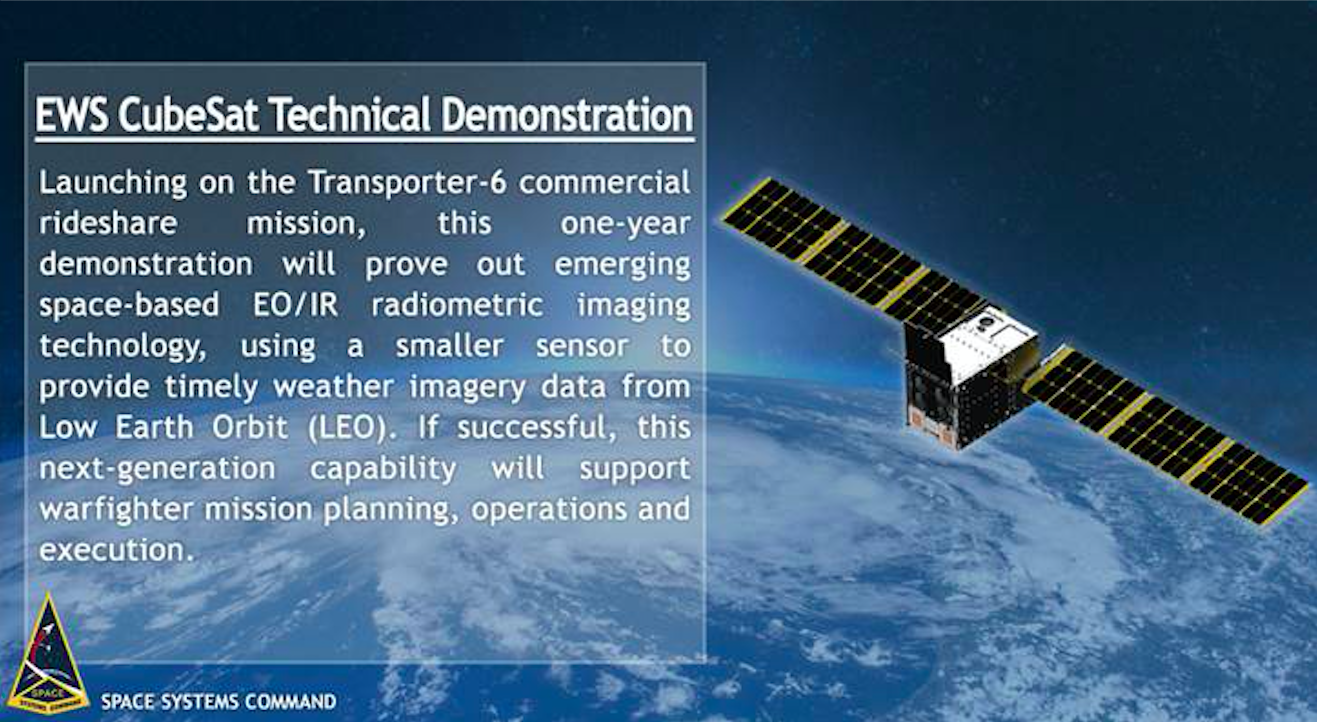
One of the many payloads that took flight atop a SpaceX Falcon 9 rocket on Tuesday (Jan. 3) is a tiny craft that could help transform the way the U.S. Space Force gathers weather data.
The SpaceX mission, known as Transporter-6, sent a total of 114 small satellites to Earth orbit for a variety of customers, including the Space Force. The newest branch of the U.S. military put its Electro-Optical/Infrared (EO/IR) Weather Systems (EWS) cubesat on Transporter-6.
EWS is an experimental satellite designed to prove out new imaging technology — specifically, an EO/IR system that employs a smaller sensor. If all goes according to plan, the cubesat will use this gear to peer at Earth for a year.
"If successful, this will provide an innovative option to deliver space-based environmental monitoring data to the warfighter at an operationally relevant speed," Lt. Col. Joe Maguadog, EWS Materiel Leader and Program Manager, said in a Space Force statement.
"This demonstration will inform our transition toward a more affordable, scalable and resilient EO/IR weather constellation," he added.
Related: What is the U.S. Space Force?

EWS and the philosophy behind it are part of a broader shift that the U.S. military is making with its space assets.
Get the Space.com Newsletter
Breaking space news, the latest updates on rocket launches, skywatching events and more!
The goal is to rely more and more on small, inexpensive satellites that can be built and launched quickly. Reconnaissance and communications systems that rely on such spacecraft are harder for an adversary to degrade than traditional space networks, which tend to employ a handful of highly capable but expensive and complex spacecraft that take years to develop.
Small satellites are becoming more and more capable, as are their builders, who are increasingly in the private sector.
For example, 36 of the satellites that went up on Transporter-6 were "SuperDove" Earth-observation craft operated by the San Francisco-based company Planet. SuperDoves are the size of a loaf of bread but can resolve features just 10 feet (3 meters) across on our planet's surface.
Transporter-6 was the first mission of 2023 for SpaceX and the company's 200th orbital flight overall. Transporter-6 notched another milestone as well: It marked the 15th launch of that particular Falcon 9's first stage, tying a reusability record the company set just last month.
Mike Wall is the author of "Out There" (Grand Central Publishing, 2018; illustrated by Karl Tate), a book about the search for alien life. Follow him on Twitter @michaeldwall. Follow us on Twitter @Spacedotcom or Facebook.
Join our Space Forums to keep talking space on the latest missions, night sky and more! And if you have a news tip, correction or comment, let us know at: community@space.com.

Michael Wall is a Senior Space Writer with Space.com and joined the team in 2010. He primarily covers exoplanets, spaceflight and military space, but has been known to dabble in the space art beat. His book about the search for alien life, "Out There," was published on Nov. 13, 2018. Before becoming a science writer, Michael worked as a herpetologist and wildlife biologist. He has a Ph.D. in evolutionary biology from the University of Sydney, Australia, a bachelor's degree from the University of Arizona, and a graduate certificate in science writing from the University of California, Santa Cruz. To find out what his latest project is, you can follow Michael on Twitter.









